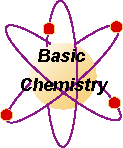Eye Damage is Irreversible
Demonstration: - Overhead projector
- 1 sheet of clear acetate film from an art or office supply store
- permanent marker
- water
- dark food coloring mix
- eyedropper.
- Using the marker draw an eyeball and eyelashes on the acetate. Cut out a contact lens from the unused part of the acetate and cover the colored portion of the eye (iris and pupil). Using the eyedropper put a few drops of colored water on the edge of the contact lens. Observe the capillary action of solution being drawn under the lens.
Goggles It is always wise to wear chemical splash goggles when heat, glassware, dusts and chemicals are being used and especially when cleaning up. I have seen what looked like perfectly good glassware (no chips or cracks) shatter when water was being heated in both testubes and a beaker.
- Overhead projector
- 1 sheet of clear acetate film from an art or office supply store
- permanent marker
- water
- dark food coloring mix
- eyedropper.
- Using the marker draw an eyeball and eyelashes on the acetate. Cut out a contact lens from the unused part of the acetate and cover the colored portion of the eye (iris and pupil). Using the eyedropper put a few drops of colored water on the edge of the contact lens. Observe the capillary action of solution being drawn under the lens.
It is always wise to wear chemical splash goggles when heat, glassware, dusts and chemicals are being used and especially when cleaning up. I have seen what looked like perfectly good glassware (no chips or cracks) shatter when water was being heated in both testubes and a beaker.
Demonstration: Put an egg into concentrated H2SO4 and observe the results. Battery acid is concentrated enough. The egg is a cell that is chemically similar to your eye.
Refer to Material Safety Data Sheets (MSDS)for each chemical being used to determine the precautions needed.


